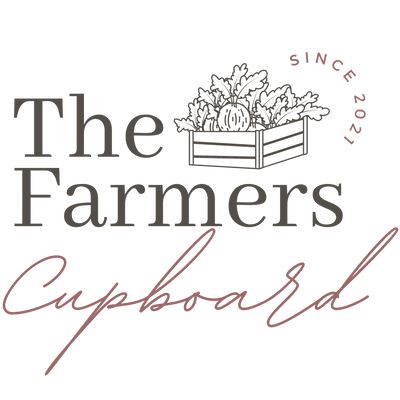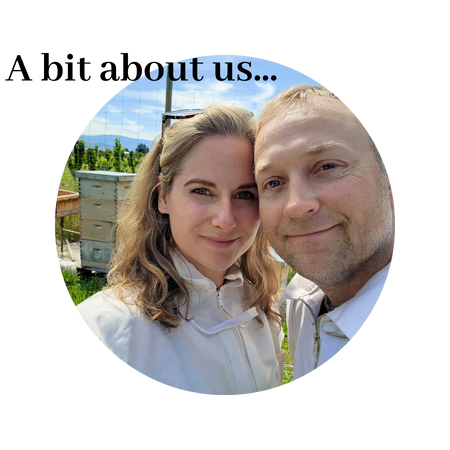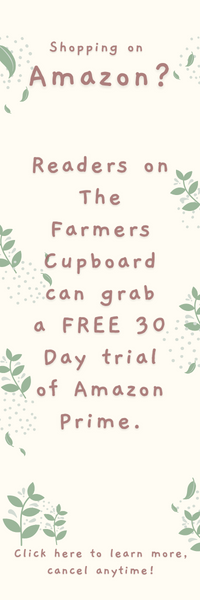People love beeswax for its versatility and natural properties.
It is a natural alternative to synthetic products and has a sweet, subtle scent of honey. Plus, there are SO MANY uses for that beautiful, yellow beeswax.
Beeswax is a great moisturizer for the skin and can be used in a variety of products such as lip balms, lotions, and candles. It is also used as a wood polish and furniture conditioner, as well as in food wraps as a sustainable alternative to plastic wrap.
Yellow beeswax is also a byproduct of honey bees, making it a sustainable and eco-friendly choice!
We are backyard beekeepers here and use natural beeswax from our honey bee hive for so many things around the house and for our own skincare and home products.
Today, we are going to share the best ways to use beeswax, and we will link to the tutorial for each one if you are interested in making your own beeswax products!
We will first start by sharing some information on purchasing beeswax if you are not a beekeeper, as there are things to watch out for.

Purchasing Beeswax
When you are going to purchase beeswax for your own natural products, it is so, SO important that you purchase 100% pure and real beeswax.
There are many out-of-countries that sell "100% pure beeswax" on the big online stores, but their labelling requirements may differ from ours, and you may be getting a beeswax blended with a secondary oil or wax.
Another tip, is to purchase your beeswax directly from a beekeeper, and there are several who sell their pure beeswax online. (Plus, it is so nice to support these beekeepers).
We recommend purchasing beeswax from this beekeeping family here (updated to reflect their new amazon listing!), we have personally used their beeswax and it is a high quality, pure product.
Here they are:
We also have written an article listing other reliable beekeepers for you to look through as well, and you can read that here:
Where To Buy Beeswax Directly From Beekeepers
Another thing to be aware of when looking for real beeswax, is the words "organic" on the label.
There are regulations on selling byproducts from honey bees, and to define your product as "organic", there is a certain criteria that needs to be met, that is pretty much impossible to achieve (yes, there are acceptations, but it is rare).
Other countries may have different regulations in their labelling, but in the USA and Canada, in order to to label your beeswax as "organic", everything in the range of where the honeybees fly has to be organic.
Honey bees can fly 2-3 miles from their hive in all directions. So every flower they pollinate would have to be "organic" and pesticide-free in order for their honey and their beeswax to be organic. Pretty hard to do.
Ok, now that we have spoken about beeswax, let's talk about what you can do with it! Here are the best uses for beeswax.

BEST Beeswax Uses
Here are the best ways you can use beeswax:
1. Beeswax Wraps
Read article on how to make beeswax wraps here
Beeswax wraps are a great alternative to plastic wrap for food storage. They are reusable, biodegradable, and are totally compostable.
The wax coating creates a breathable barrier that helps to keep food fresh and prevents it from drying out. They are also versatile and can be used to wrap a variety of food items such as fruits, vegetables, bread, cheese, and snacks.
Beeswax wraps are easy to clean and can be used again and again, making them a more sustainable and eco-friendly option compared to disposable plastic wrap.
Beeswax wraps can be purchased from handmade sellers, or you can make your own beeswax wraps yourself with just a few ingredients! No matter what, beeswax wraps are a beautiful and eco-friendly way to preserve your food in the fridge, and we love using and making them.
See the best beeswax wrap sellers here
Read about the pros and cons of beeswax wraps here
2. Beeswax Candles
Read how to make your own beeswax candles here
Read about candle making supplies here
Beeswax candles are a more eco-friendly option compared to candles made from petroleum-based paraffin or genetically modified soy. They also have a longer burn time and produce a warm, natural glow that is unique to beeswax.
Additionally, making your own candles from natural beeswax is nice as they release a very subtle, sweet honey scent as they burn, adding a pleasant aroma to any room. They also burn clean as well.
With these benefits, it's no wonder that many people are choosing to make the switch to beeswax candles for their own candle making practices.
3. Beeswax Lip Balm
Read how to make beeswax lip balm here
Shop for beeswax lip balm here
Yellow beeswax balm is a seriously fantastic product for your lips, and is different from your regular lip balms.
Beeswax forms a protective barrier on the skin, helping to lock in moisture and prevent chapping and dryness. It is also rich in vitamins and minerals that are beneficial for skin health, including vitamin A, which is known for its ability to promote cell growth and repair. So it is not only fun making your own lip balm, it can be better for your lips!
Unlike many commercial lip balms that contain petroleum-based ingredients and alcohol (which is purposely added to chap stick so your lips dry out faster and you have to keep reapplying - seriously, read the ingredient list!), beeswax is a natural and non-toxic alternative that is safe for use on the delicate skin of the lips.
Additionally, these lip balms can be infused with other nourishing ingredients such as coconut oil, shea butter, and essential oils (or flavor oils if you prefer flavor), further enhancing their moisturizing properties.
With its ability to hydrate and protect the lips, it's no wonder that lip balm with beeswax has become a popular choice for those seeking a natural, nourishing alternative to traditional lip balms, and amazingly enough, you can easily make it yourself.
4. Beeswax Furniture Polish
Read how to make your own beeswax furniture polish here
Beeswax is a great wax for furniture polish. It has natural oils in it that help nourish and protect the wood, preventing it from drying out and becoming brittle.
It also creates a subtle, natural sheen on the surface of the wood, bringing out the wood's natural beauty and enhancing its overall appearance.
In addition, beeswax is water-resistant and helps to repel dust and dirt, making it easier to keep furniture clean and looking its best. Unlike synthetic furniture polishes that can contain harsh chemicals, beeswax is a natural and non-toxic alternative that is safe for use on a variety of wood surfaces.
Plus, when you make it yourself you can add your own scents if you like with a lemon or peppermint essential oil.
With its ability to protect and enhance the beauty of furniture, it's no wonder that beeswax has become such a popular choice for people who want a natural and effective furniture polish.
5. Beeswax Cast Iron Seasoning
Read how to season your cast iron with a beeswax blend here
There are so many ways to season cast iron and so many mediums you can use. But you want to use a high smoking point oil or wax that is a saturated fat, not an unsaturated fat that can go rancid over time.
Beeswax is naturally heat-resistant, which means that it can withstand high temperatures without breaking down, making it an excellent choice for high-heat cooking.
It is also a natural, eco-friendly wax that is edible, making melted beeswax a safe option to use on a cooking surface.
Binding a saturated fat with beeswax will do an amazing job of seasoning your cast iron so it last for years and years, and will allow your cooking surface to become non stick.
Many people use olive oil, cocoa butter, jojoba oil and other oils, but if you do a bit of research, it is easy to find the best oil source for a slick patina.
There are so many natural and beneficial uses for beeswax. If you are interested in reading about more uses for beeswax, please let us know in the comments what you would like to read more of.
Here are some other resources you may be interested in:
BEST Wax Melter For Beeswax (Source)
Shop for the BEST USA-made cast iron cookware HERE
Beekeeping Equipment List | How To Start
Did you like this article?
❤️ Here's how you can support our blog:
My name is Linnea and I am a backyard gardening enthusiast! Along with my husband and our two kids (and chickens, ducks, bees and our little dog). Our hobby - growing our own food and making our meals from scratch. My blog, The Farmers Cupboard, is the website that blossomed from that passion. I love every second I spend sharing our hobby with like minded backyard growers.
It's easy to support my blog, and it is so appreciated. Please SHARE an article somewhere, pin a photo to your Pinterest board, follow on any of our social medias or sign up for our newsletter! That's it!
These little things help our blog grow and allow us to continue doing what we love: growing good food and sharing what we learn.
PINTEREST PASSIONATE? We're opening up our cupboard to you!
Click on the pin below made just for you. It will bring you right to my little Pinterest community, where I would love for you to FOLLOW The Farmers Cupboard and see all of our gardening and backyard dream ideas!
Let's grow good things together!













0 comments